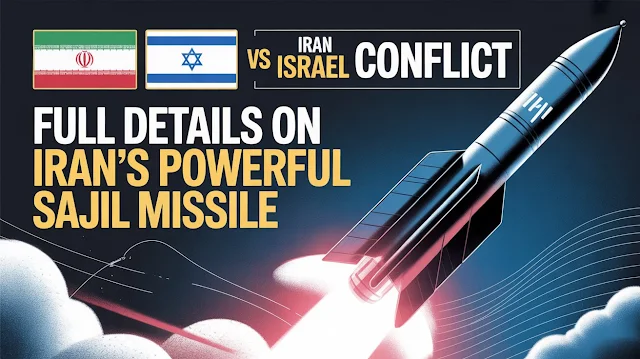Iran vs Israel Conflict: Full Details on Iran’s Powerful Sajil Missile Used in the Attack
In the ongoing war between Israel and Iran, both countries are trying to showcase the weapons they are using against each other. When Iran recently attacked Israel, it claimed that it had used the Sajil missile in the operation.
This is Iran’s indigenously developed missile, capable of hitting long distances and carrying large warheads. However, Israel claims that the Israel Defense Force successfully intercepted the Sajil missile. Despite that, discussions around Iran’s Sajil missile have gained momentum—so let’s learn more about it.
The range of the Sajil missile can be understood from the fact that if it's fired from Iran’s Natanz city, it can reach Tel Aviv in Israel in just 7 minutes. The distance from Natanz to Tel Aviv is approximately 2,000 kilometers.
The Iranian Embassy posted on X (formerly Twitter) that this was the 12th response under Operation True Promise 3, which began with the launch of a two-stage Sajil missile targeting long-range and heavily fortified targets. According to this post, the Sajil missile uses solid fuel, making it one of Iran’s most accurate and powerful military weapons. It can identify and destroy key enemy locations with high precision.
The Sajil missile is around 18 meters long, and the use of solid fuel makes it special. Solid fuel allows for quick launch capability, making it more effective in times of war. The Sajil missile has a maximum range of 2,000 kilometers, classifying it as a medium-range ballistic missile.
This missile can strike from regions like Israel, Iran, parts of Southeastern Europe, and Central Asia. It carries a warhead of approximately 700 kilograms. A warhead refers to the amount of payload or explosives the missile can carry. Additionally, the launch weight of the Sajil missile—i.e., its weight at the time of firing—is reported to be around 23,600 kilograms.
The first successful test of the Sajil missile was conducted in 2008, when it reached a distance of 800 kilometers. For the evaluation of advanced technology and navigation systems, it was launched again in May 2009. According to the American think tank Center for Strategic and International Studies (CSIS), there may be multiple variants of the Sajil missile. In 2009, Iran named the test Sajil-2. A later report suggested that Sajil-3 could be even more advanced.
The Sajil-3 is expected to have three stages, a maximum range of 4,000 kilometers, and a launch weight of 38,000 kilograms. After 2012, there were no further predictions about this missile, leading to uncertainty about its future. Iran launched the missile again in 2021 during a military exercise, nearly a decade after the previous known deployment.





.png)
.png)
.png)
0 Comments